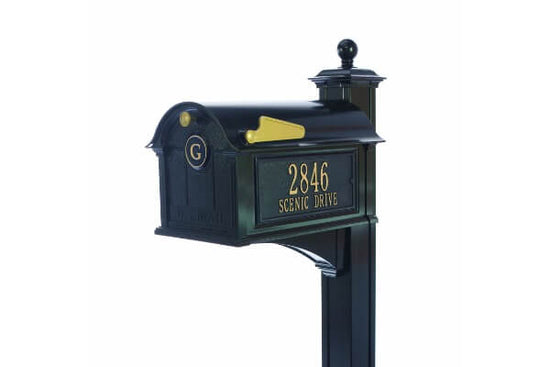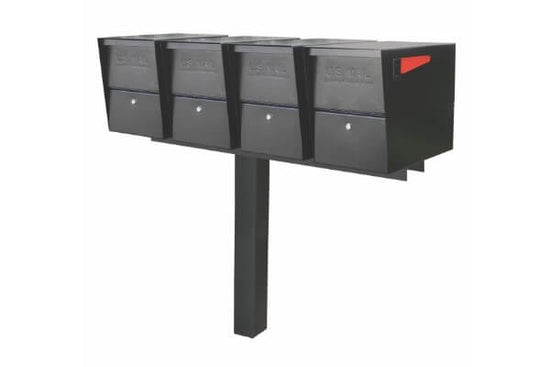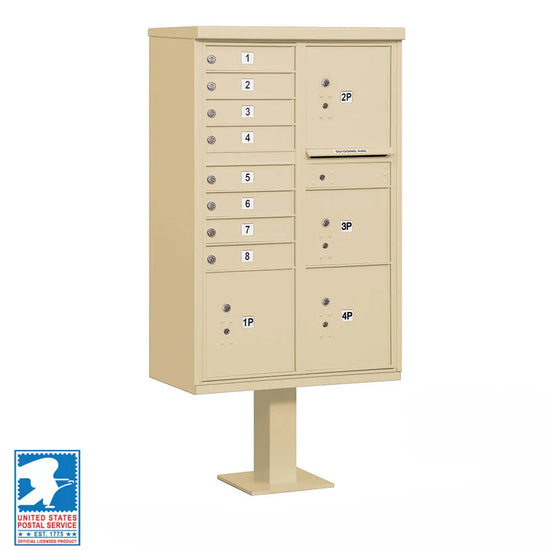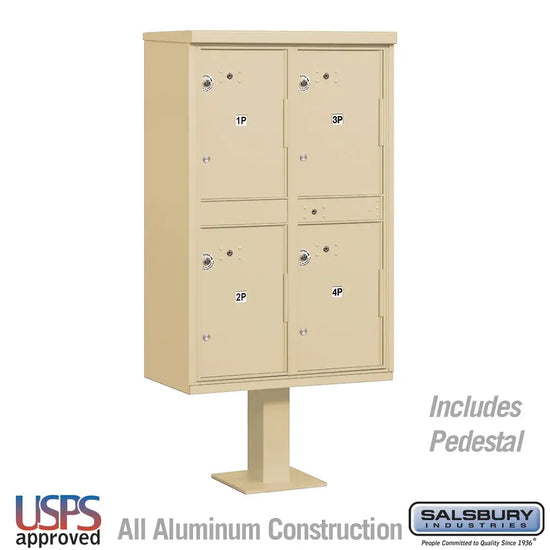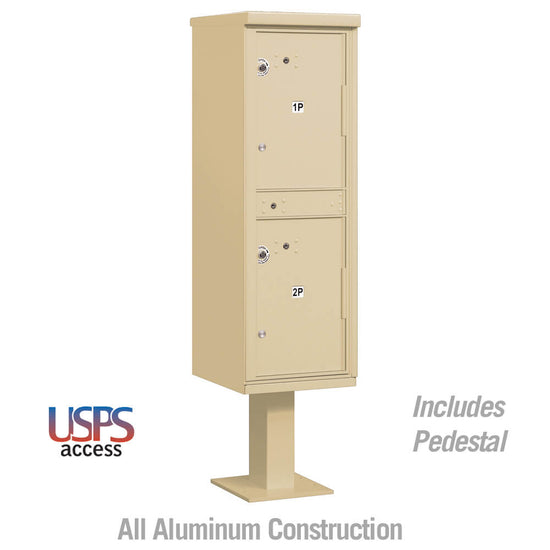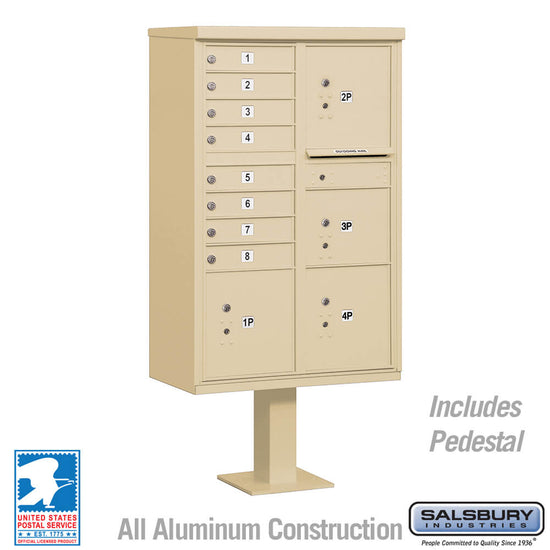Typically crafted from sturdy plastic materials, plastic mailboxes are an excellent alternative to wooden and metal mailboxes, offering a durable and easy-to-maintain option.
Thanks to their clean look and feel, plastic mailboxes are popular and highly affordable. If you’re in the market for these low-maintenance mailboxes, this guide will help you make an informed choice with tips on selection, installation, and maintenance.
Let’s get right to it.
Advantages of Plastic Mailboxes
Why should you consider a plastic mailbox for your home? Here are a few compelling reasons:
Durability
A residential mailbox is typically outside day in and day out, taking whatever Mother Nature throws at it. The good news is plastic mailboxes are durable, withstanding the rigors of daily use and exposure to the elements.
Unlike other mailbox materials, premium plastic materials don’t rust, corrode, or deteriorate over time. They’re in it for the long haul, so you won’t have to think about replacing them any time soon, making them a great option.
UV and Water-Resistance
Good quality plastic mailbox models are UV-resistant, so they won’t fade or become brittle when exposed to the sun. Plus, plastic mailboxes are water-resistant, meaning they won’t warp or rot due to moisture exposure.
Low Maintenance
Plastic mailboxes are virtually maintenance-free. They don’t need periodic repainting or other extensive upkeep.
A little soap and water will do the trick for cleaning, saving you both time and money in the long run. You can even opt to get a mailbox cover to further protect your new mailbox.
Lightweight and Easy to Install
Thanks to their lightweight construction, you won’t break a sweat installing your new mailbox. The installation of your plastic mailbox doesn’t require heavy equipment or specialized tools, making it easy if you plan to install it yourself.
Budget-Friendly
Want a mailbox that doesn’t break the bank? Plastic mailboxes are your best bet. They are more cost-effective than options made from wood or metal, making them an attractive option for budget-conscious homeowners.
Types of Plastic Mailboxes
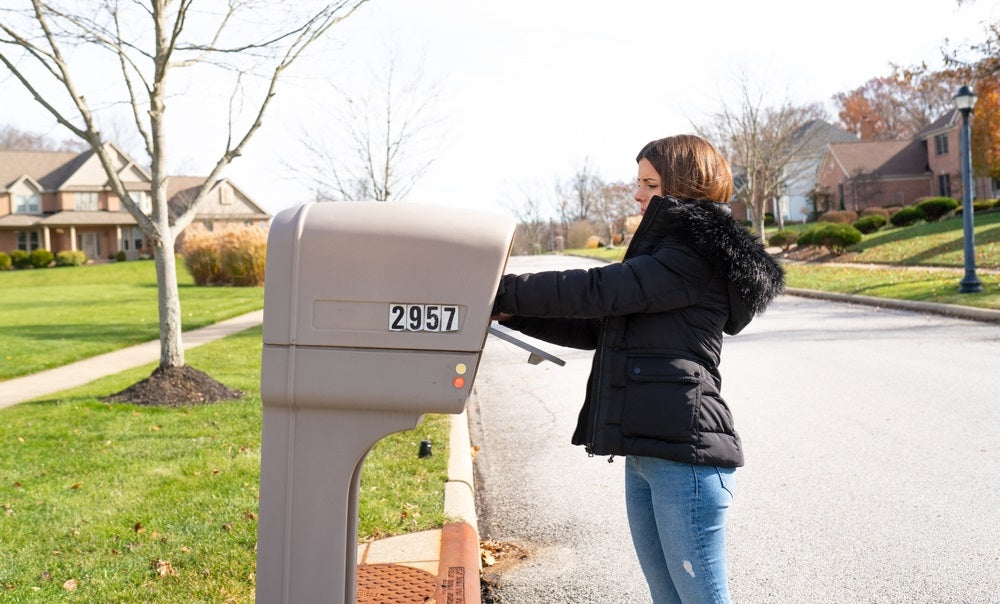
There’s a whole bunch of plastic mailboxes out there, each with its own style, orientation, and features. Here are the common ones.
- Post-mounted: These are your classic plastic mailboxes that perch on a mailbox post. They’re the most common of the plastic mailbox bunch, available in a variety of sizes, shapes, and designs to cater to all sorts of needs and preferences.
- Wall-mounted: Perfect for homes with limited space, these mailboxes are designed to hang on your wall. They offer a range of sizes, shapes, and designs, so it’s easy to find something that suits your taste and requirements.
- All-in-one mailbox and post kits: These convenient packages include both the mailbox and its corresponding post for easy installation as a single unit.
- Double-walled mailboxes: Crafted with a double wall plastic construction, these plastic mailboxes offer enhanced durability and superior protection from the elements.
- Locking mailboxes: Equipped with a lock and key, locking mailboxes offer added security for your mail.
- Mailboxes with newspaper holders: These mailboxes feature a built-in newspaper holder, offering a handy spot to keep your daily papers. Like most plastic mailbox types, they come in various sizes and designs to meet a range of preferences and needs.
What to Consider When Choosing a Plastic Mailbox
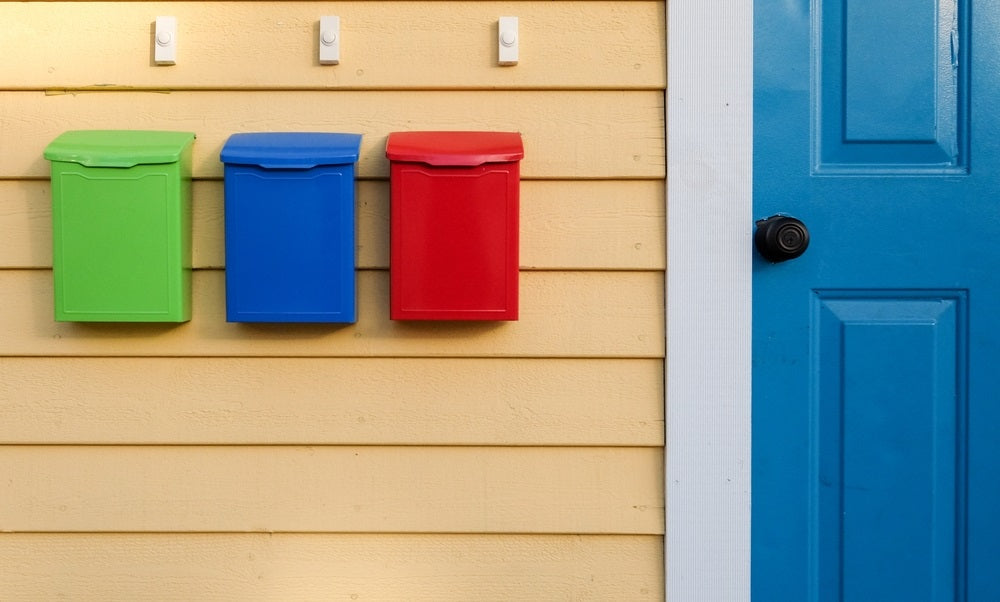
When it comes to selecting the perfect plastic mailbox, there are several practical points to keep in mind:
Material
The material your mailbox is made of matters because it determines its durability. While plastic mailboxes are a popular choice, offering a variety of colors and styles, they are not the most durable options. For top-tier durability, metal or metal alloy mailboxes are your best bet, although they come with a higher price tag.
Weather Resistance
Factor in your local weather when selecting a plastic mailbox. No doubt, plastic can resist rust and is low-maintenance, but it can’t handle extreme heat. If you live in a climate prone to extreme heat, you should opt for mailboxes made from materials like cast aluminum or galvanized steel.
Security
If mail security is a concern, go for a locking mailbox that’s both safe and stylish. But if you’re all about easy access, there are plenty of non-locking options, too.
Size
Consider your daily mail needs, including the volume, types, and frequency of deliveries. If you frequently shop online, you might want to opt for a larger mailbox. And be sure to factor in all mail recipients at your address when picking the right size.
Style
Let your mailbox match your home’s vibe, be it sleek modern, vintage Victorian, classic Colonial, or anything in between. Your mailbox should add to your home’s curb appeal and show off your personality.
Caring for Your Plastic Mailbox

- Regular cleaning: To keep your plastic mailbox looking great, give it a good cleaning now and then. Skip the heavy-duty cleaners ― just grab some mild detergent and a soft cloth to scrub away the dirt. Remember to rinse it well afterward.
- Protect from sunlight: While plastic is great at resisting UV light, prolonged exposure to direct sunlight can cause it to fade over time. If possible, place your mailbox in a shaded area or use UV-resistant spray to help protect it from sun damage.
- Secure the mailbox: Make sure your mailbox is securely mounted or installed in accordance with USPS standards. Loose or wobbly mailboxes can be more prone to damage and may not provide the best protection for your mail.
- Inspect locks and latches: If your plastic mailbox has a lock or latch, check it periodically to ensure it functions properly. Lubricate and maintain the locking mechanism as recommended by the manufacturer.
- Keep vegetation at bay: Trim back any overhanging branches, bushes, or vegetation that might come into contact with your mailbox. This will prevent scratches and damage and make your mailbox more accessible to mail carriers.
- Seasonal maintenance: Consider giving your mailbox a little extra attention after extreme weather conditions, like heavy storms or harsh winters. These conditions can take a toll on your mailbox’s appearance and functionality.
